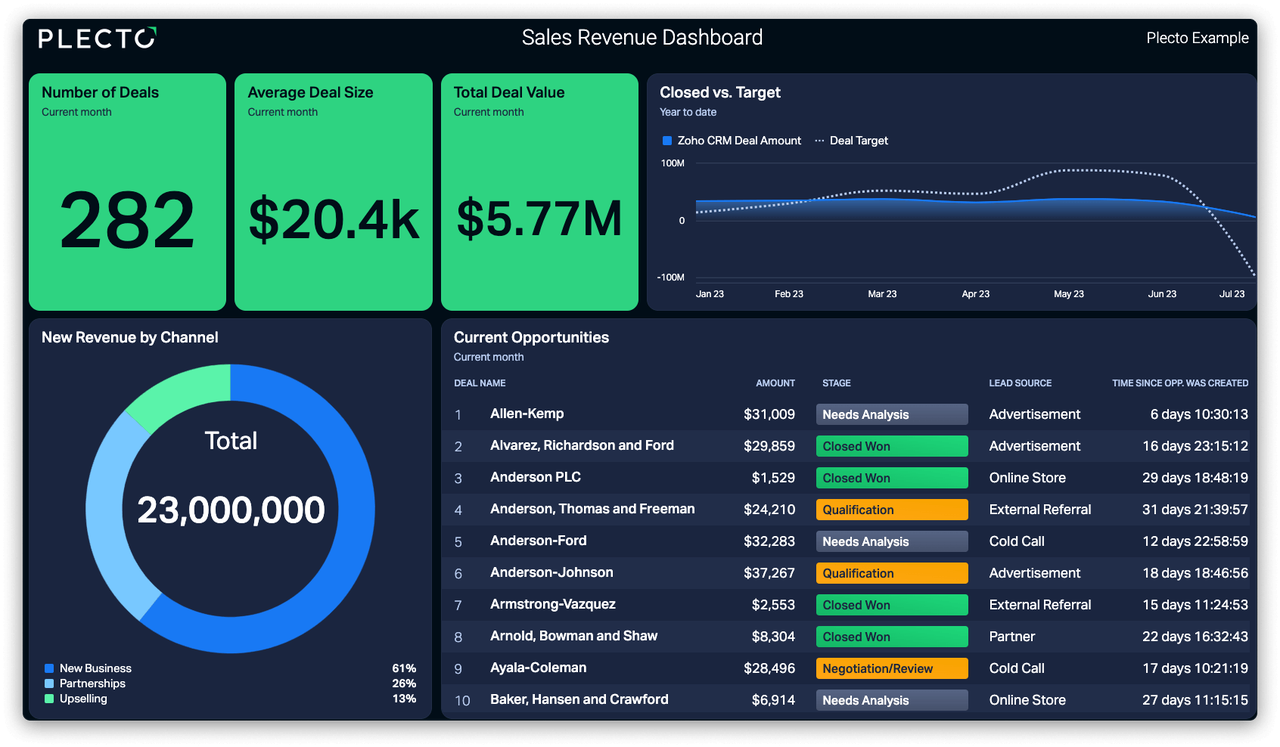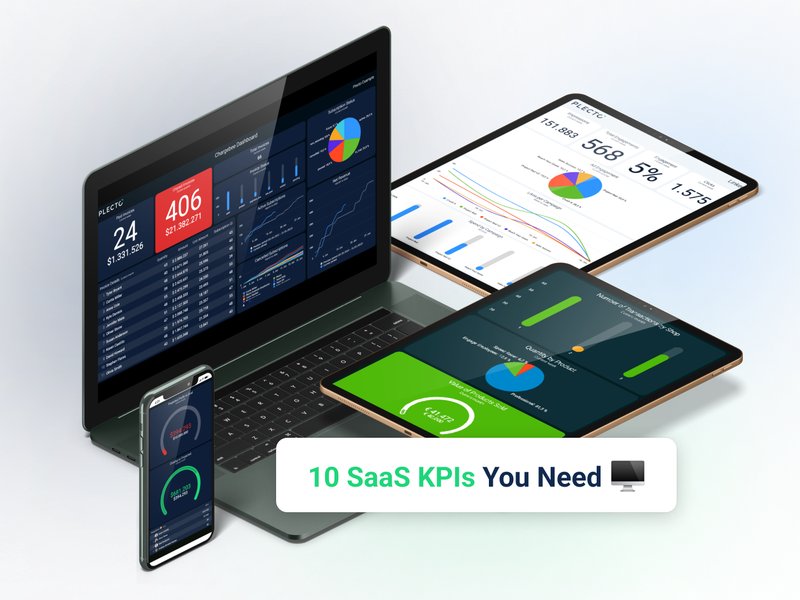It's not enough to launch a public relations campaign and hope for the best. You need a way to measure campaign success and determine if your strategies are actually working as they should. If they’re not, you can then revisit and tweak them.
Fortunately, public relations KPIs come to the rescue, offering a clear picture of the impact of your campaigns on your target audience.
More PR professionals are realizing the need to track metrics in PR. In fact, according to a study, 94% of PR pros track one metric or the other.
So, if you’re ready to take your public relations game to the next level, join these professionals with the five essential PR KPIs I’ll discuss in this guide.
1. Media Coverage
Media coverage is the number of times your brand appears in the media. This could be in traditional outlets, such as news outlets, TV, and magazines; or online through social media, communities, and blogs.
You can track your media coverage using media monitoring tools like Google Alerts. Google Alerts is free to use and sends you email alerts anytime your brand is mentioned in the media. Just input your brand name and set the parameters according to your preference:
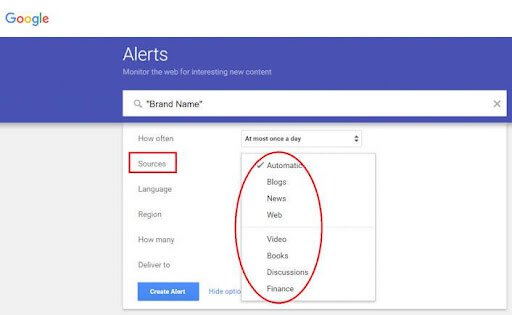
Another way to track media coverage is through real-time visualizations with Plecto. With this, you’ll be able to monitor this metric both through real-time dashboards and automated reports.
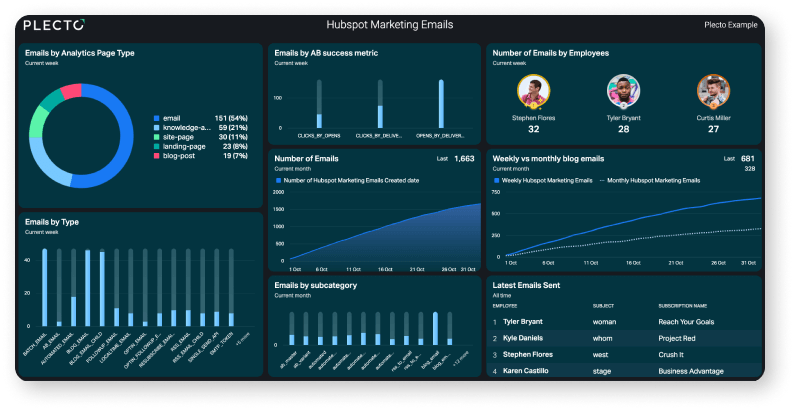
Alternatively, you can monitor your media coverage manually (but be prepared to spend a lot of time on this). Search for your brand mentions on media platforms and search engines. Then, document them in a spreadsheet:
Now, why should you care? Tracking your coverage can help you understand the exposure your brand is getting from a PR campaign. Generally, the more your coverage, the more people you’re reaching. So, if you’re getting low coverage, you can start working on developing stronger relationships with journalists and creating more appealing PR stories.
Note that media coverage is not always about quantity; quality of coverage matters, too. When you track this metric, you'll understand how your audiences are reacting to different brand stories. You’ll also know the stories that resonate with them. You then can use this insight to create more effective PR campaigns in the future.
What’s more, media coverage can help you monitor your brand perception by the public. If you’re getting negative coverage, you know you have to re-strategize with your PR crisis firm to improve your brand reputation.
So, to enjoy these benefits, I recommend paying attention to the following when tracking your media coverage.
- Relevance: Is the coverage relevant to your target audience and brand?
- Tone: Is the coverage positive, negative, or neutral?
- Reach: Does the media outlet reach your target audience effectively?
By answering these questions, you’ll understand where to steer the wheels of your PR campaign.
Build your first dashboard.
Start your 14-day free trial today
2. Media Impressions
Another one of the KPIs for public relations is media impressions. Put simply, this key indicator represents the number of times your target audience sees or hears your PR message.
Media impressions are a measure of visibility. Remember, in PR, visibility is everything. The more people who see your story, the more impact it has. This is why you should track your impressions.
To monitor media impressions, you need to understand where your target audiences are spending their time. Your media coverage analysis reveals that. Then, you can focus on these channels.
The way you measure impression may differ depending on whether these channels are traditional or digital.
Digitally, tools like Google Analytics can help you measure your web impressions. If you’re using social media, these platforms also usually have in-built analytics tools that reveal your media impressions. Here’s an example from Instagram Audience Insights.
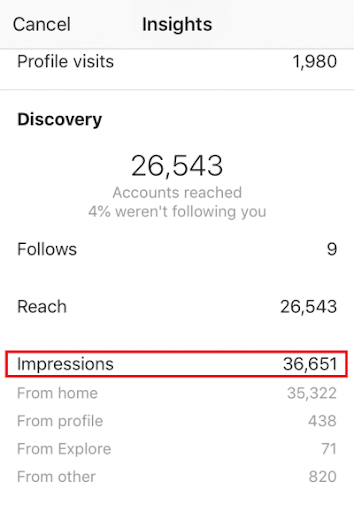
Now, suppose you focus on traditional media for your PR campaigns. In this case, you can:
- Use a research company like Nielsen
- Reach out to ask for broadcast monitoring services
- Or estimate the number of prints in circulations, etc.
These give you a rough estimate of your impression.
If you’re finding it difficult to ramp up your media impression, there’s probably a gap in your strategy. So, find and fix it. This could be by re-evaluating your media channels or adjusting your messaging to suit your audiences.
Finally, note that impressions cannot be a standalone metric, especially for social media PR. These focus more on quantity instead of quality. So, if you’ll be tracking your impression, track engagement as well.
3. Social Media Engagements
Social media engagement is the level of interaction you’re getting on social media platforms. It’s the overarching name for social media metrics like Instagram likes, Twitter retweets, and Facebook social shares.
Generally, a steady increase in the levels of engagement shows that your target audiences are interested in your brand and are interacting actively.
Some social media platforms don’t make provisions to evaluate total engagement. So, you might have to count the likes, shares, and other engagement metrics manually. Then, record them in a spreadsheet:
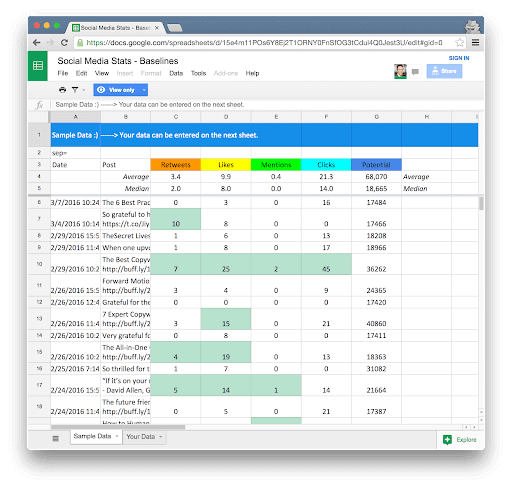
But if you can’t handle this stress, platforms like Plecto have something for you. Plecto integrates with many of the top social media platforms so you can automatically visualize your social media metrics, including engagement, and display it on a neat dashboard.
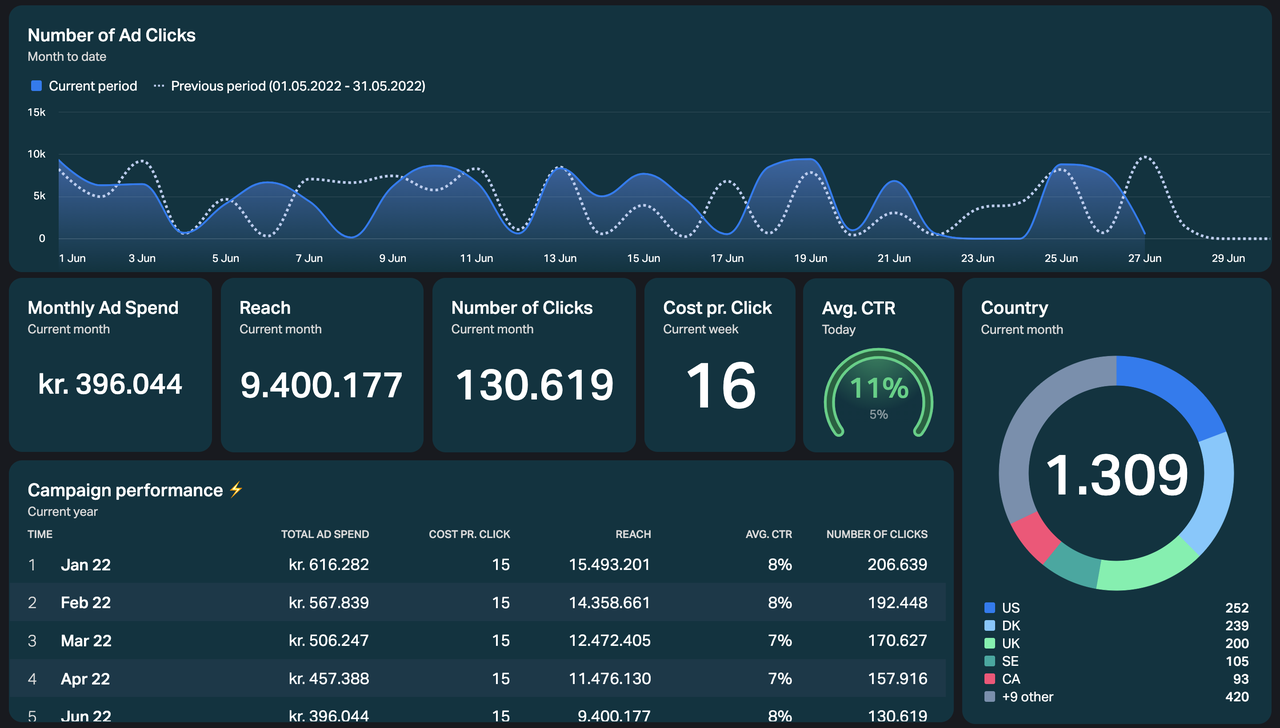
Engagement may vary depending on your number of followers. So, with engagement, there’s no benchmark to assess if you’re doing well. A better way to use this public relations metric is to calculate the engagement rate, using the formula below.

When you get your engagement rate, you can then compare it to the industry benchmark in this image:
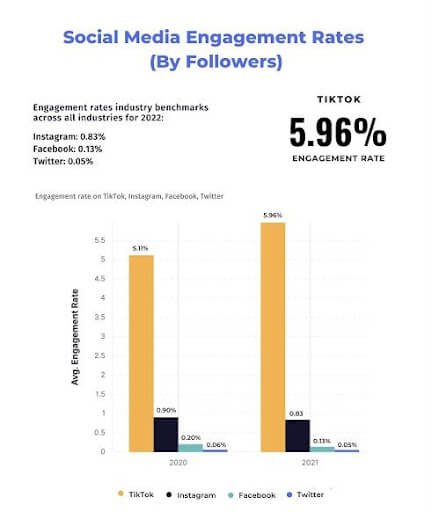
If you notice a low engagement rate, focus on creating higher-quality content for your campaigns. Around 85% of social media users want to see videos from you so, for instance, you can include more videos in your PR content strategy. Make sure the content is engaging and tailored to your audience.
Besides content marketing, you can collaborate with influencers, host events, or run contests. These are great ways to relate better with your audiences.
4. Website Traffic
Web traffic is one of the most basic key performance indicators to measure the success of online marketing strategy, including public relations. It provides insights into how effective your campaigns are in driving audience interest and engagement.
To measure website traffic, consider using web analytics tools, such as Google Analytics, Ahrefs and SEMRush.
A spike in your web traffic can indicate that a recent campaign has successfully brought people to your website.
Google Analytics allows you to set UTM parameters to track the source you’re getting your attention from - blog posts, press releases, etc. Then, you can focus your attention on these places.
It would also help if you keep an eye on your competitor’s website traffic. This gives you a picture of how you stack up.
Finally, measuring traffic is not enough. You also have to pay attention to conversion. Are these visitors completing the action you want them to? If they’re not, you have to refine your CTAs, offers, lead magnets, etc.
If you’re struggling to get a full overview of this data, Plecto can help you. Just choose from Plecto’s ready-to-go dashboard templates and you can start visualizing in no time. Plecto is also fully customizable, so you can measure the metrics that are most relevant to your business.
The tool can also automatically generate the reports you need. The reports contain real-time data, which means these are figures that are updated directly from the systems you integrate with.
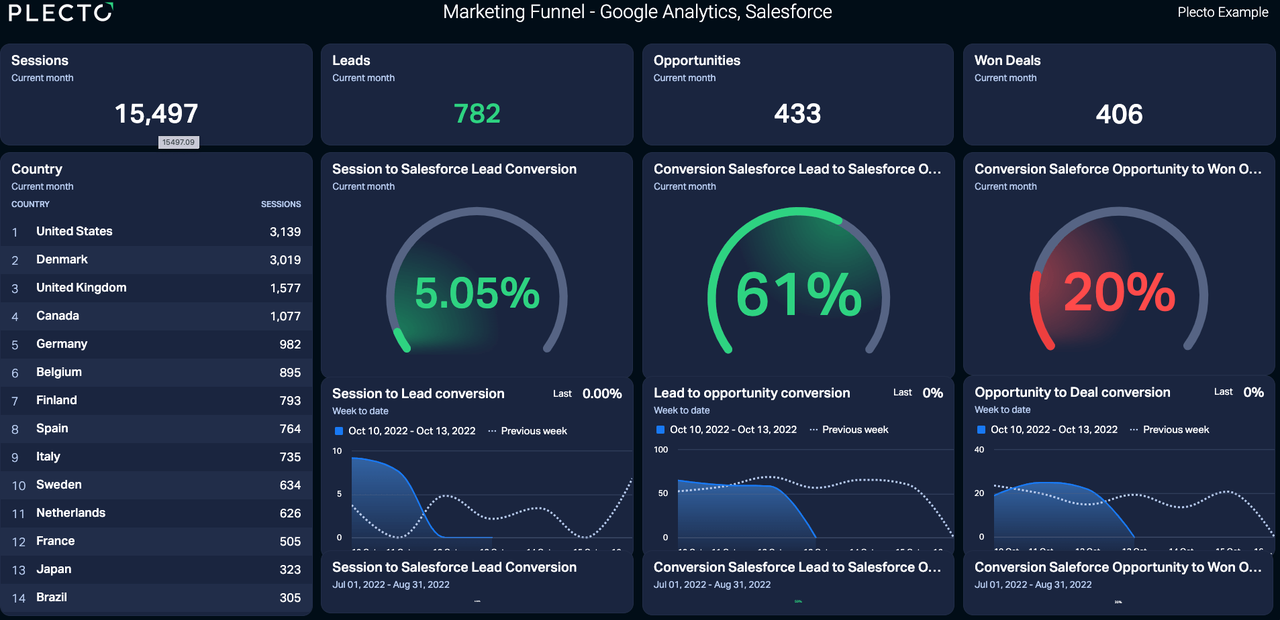
5. Share of Voice
Share of Voice (SoV) measures your share of the total conversations in your industry. It’s one of the public relations KPIs that compares your visibility to your competitors’.
Share of voice has many facets. For instance, it can be the amount of traffic you’re getting relative to your competitors. It can also be the amount of traction your hashtag is getting compared to the whole industry.
In traditional PR, the share of voice could as well be your share in radio ads, TV appearances, etc., compared to your competitors.
Using the Plecto KPI tool, you can gain insights into your share of voice. You can then compare your result to that of your competitors to see if you’re up to par.
When analyzing your share of voice, consider the context of the conversation. For instance, suppose most of the conversations around your brand are in a negative context. This will hurt your brand in the long term, even with a high share of voice.
If your share of voice is low, here are some experience-based strategies that have worked well:
- Focus on media relations: When you form strong relationships with media outlets and journalists, you’ll increase the likelihood of being mentioned in reports and articles. This increases your SoV.
- Actively engage with the target audience: On social media, be sure to like, comment, and reply to the posts of your audiences. Also, take part in relevant conversations. This helps you establish a positive reputation, ultimately increasing your share of voice.
- Again, content is king: This good old PR mantra still stands today. So, focus more on putting out content that will resonate with your target audience.
These three tips increase the likelihood of your brand being mentioned. Thus, boosting your SoV.
In Closing
Public relations KPIs are necessary to measure the impact and success of your public relations campaign. To take advantage of them, begin by analyzing your media coverage and media impressions. Also, pay attention to web traffic and social media engagement. All these key indicators keep you in sync with your visibility.
Further, you want to know how you’re performing compared to your competitors. This is why you should also track your share of voice.
So, don’t just hope for the best - measure your results and make data-driven decisions to improve your PR.
By Chris Norton, Founder of B2B PR agency Prohibition, former University lecturer, author of “Share This Too” and his social media training blog which is listed in the UK's top 10 PR and social media marketing blogs. For tons of digital PR tips, you can find Chris here @chris_norton.

